Why Is My Doorbell Buzzing? Likely the Transformer
Author: Omar Alonso | Editor: Omar Alonso
Review & Research: Jen Worst & Chris Miller

Do you have problems with your doorbell buzzing? It's annoying, isn't it? Hearing that droning buzzing sound all day and night eats away at your subconscious and drives you crazy. Fortunately, it's a pretty easy fix. If you have basic DIY skills and tools, you can take care of the problem this afternoon and do away with the droning ruining your peace and quiet.
A doorbell is a basic piece of electronics, and by understanding a few key components, you can fix it without any issues. It's an inexpensive job, with affordable and readily available parts found at most hardware stores or electrical wholesalers. In most cases, you don't have to repair these parts; replacing them is cheap.
Understanding the Basic Components of the Doorbell
A doorbell utilizes low-voltage wiring connecting the bell or chimes to the button and transformer, with the button acting as a switch. You'll usually need a multimeter for the job, but they're easy to use, inexpensive, and handy around the house anyway.
The wires connect to the transformer using wire nuts, and the doorbell button has small-gauge wires running from the button to the transformer. It's safe to work on without shutting off the power to the DB board and your home.
While it's a rare occurrence, you need to be aware that even low-voltage circuits can carry a dangerous current if the transformer fails, so be careful. Please understand what a transformer is and how it works.
Testing the Door Bell Transformer
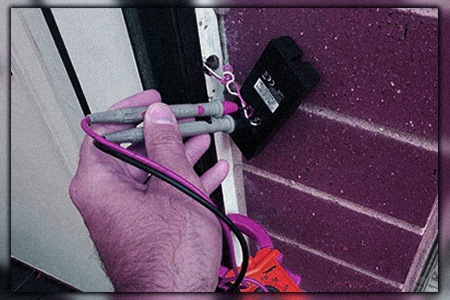
Door bell transformers input 120 volts on one side and send out 8, 16, 24, or 30 volts. Make sure you get the right transformer to match your old unit. You can use your multimeter to test the transformer and see if it's working.
Set the voltage range on the multimeter to 120 volts AC. Touch the tip of the probes to the terminal screws on the transformer. You can identify them by looking for the screws with the thin bell-gauge wire.
The multimeter should read 12 volts if the transformer is working properly. Or it will read the secondary voltage (8, 16, 24, or 30). If it's significantly higher than the smaller number, the transformer is faulty, and you'll need to replace it.
Test the transformer again if the multimeter gives a reading close to the secondary voltage rating. This time, set the multimeter's range to a lower value just under the reading. You'll need to replace the transformer if the second reading doesn't match up with the voltage rating marked on the bell or transformer.
If you can't access or find the transformer in the unit, remove the wire from the terminal marked "front" on the bell unit. If you're confident the button works, get someone to push it while you take the measurement.
If you're uncertain if the button works, remove it carefully from the wall along with the two wires connecting to the button's terminals. Use a wire nut and twist the ends of the wires together, but avoid touching the exposed ends of the wires.
Set the multimeter to "Voltage" and touch one probe to the freed wire coming from the "Front" terminal. Touch the other probe to the "trans" terminal. If the multimeter doesn't give you a reading, you'll need to locate the transformer and replace it.
What If the Doorbell Hums But Doesn't Work?
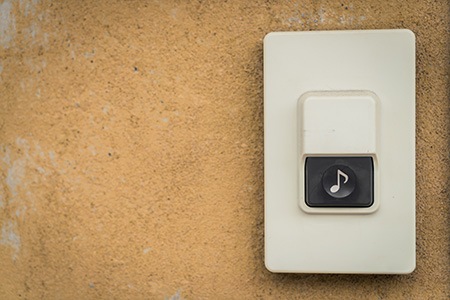
If the doorbell doesn't ring when you push the button, but the transformer constantly hums, follow this procedure to fix it:
Inspect the Bell
To start diagnosing doorbell buzzing, check to see if the wires connect to the bell terminals. Clean the contacts using electrical contact cleaner and give them a light rub with fine-grit sandpaper to remove debris or corrosion.
Inspect the Bell Piston or Chime Unit
When someone presses the doorbell button, an electromagnet fires the piston inside the bell unit. The piston might be jammed in the sleeve, worn, or stuck if it's not working. The piston can gum up if someone oiled it in the past (that's a no-no).
If that's the case, clean it using rubbing alcohol or light sandpaper. If it doesn't change things, replace the piston or the chime unit in the doorbell.
Inspect the Wiring
Check to see if there are any breaks in the doorbell wiring. If you find any problems, strip away the insulation from the ends of the wires and splice the wires with a short piece of compatible gauge wire. This is how to strip a wire if you need help. Ensure you use the right size wire nuts.
How Do I Fix the Doorbell if It Doesn't Buzz or Ring?
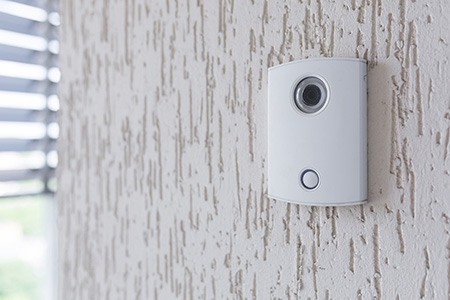
If you don't hear a click, hum, or chiming noise when pressing the doorbell button, it means the system isn't receiving any power. Run through the following checks to locate the problem:
Look for a Tripped Breaker
Check your home's breaker board and look for a tripped breaker switch. If it's tripped, flip it up and see if it makes a difference.
Inspect the Transformer to See If It Burned Out
Turn off the power running to the doorbell circuit and check the transformer. If it has signs of being burned out, you'll need to replace it. Don't worry, you can still flush the toilet if the power is out.
Check the Connections
Ensure all wiring entering the doorbell, and its components connect securely at the button, bell, and transformer.
Inspect the Button
Since the button is part of a moving system and the most significant piece of the puzzle, it's also the most likely to fail. Inspect the button by removing the attachment screws and gently pulling it from the housing.
Ensure the two wires connect securely to the terminals and touch the blade of a screwdriver across the terminals, or you can remove the wires and touch them together. If the bell chimes, it's an easy and inexpensive fix.
Remove the wires and look for signs of corrosion on the button contacts. Clean the terminals with electrical cleaner or fine sandpaper.
Reconnect the Wiring
The button test works if the circuit is receiving power. If it doesn't, use the multimeter to complete a continuity test. The doorbell buzzing should stop if the power is off.
Set it to Ohms and touch a probe to the button contact, and push and release the button. The meter should produce a reading if there's an electrical current running to it. If that fix doesn't work, remove and replace the doorbell button.
What Do I Do If the Doorbell Buzzes or Hums Continuously?
If the doorbell is constantly ringing, the button is possibly stuck. Unfortunately, that means it's eventually going to burn out the transformer. Disconnect the button from the wires. Unscrew the button and clean the contacts, or replace the button. If the doorbell buzzes but doesn't ring (as in it doesn't chime when pressed) consult the rest of the guidance here.
Is Your Doorbell Making a Buzzing Noise? Check These FAQ’s
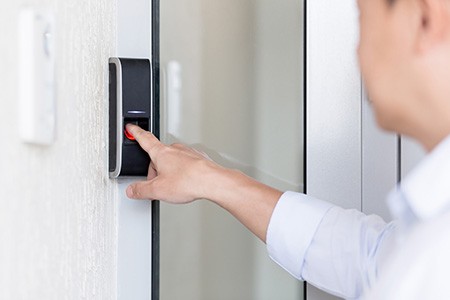
There’s a handful of questions that always come up when someone starts investigating and trying to understand how to stop a doorbell transformer from buzzing. Let’s cover those now.
Is it Normal if My Doorbell Transformer Makes a Noise?
The doorbell transformer buzzing will be an audible, low frequency humming sound if it's dysfunctional. Typically, the unit will always produce a low hum, but it's barely audible; if you can hear it from a step or two away from the unit, that's a problem. Follow our guide to assess the doorbell box buzzing and repair the unit.
Is it Safe to Handle the Doorbell Wiring?
The doorbell operates on a low-voltage current delivered by the transformer inside the unit. The transformer takes a standard electrical voltage, typically 110 to 120 volts, stepping it down to 10 to 24 volts for use in the system.
Both wireless and wired doorbells use the transformer to convert the power source to the correct voltage and power the system when someone pushes the doorbell button. You will want to cut power to the entire doorbell if you plan on working on the transformer itself.
Do I Need to Turn Off My Home's Power Before Working on the Doorbell?
Due to the low-voltage running through the wires on the exit side of the transformer, it's safe to work on the doorbell without disconnecting it from the power.
So, you can check the system components without hitting the breaker switch. This is beneficial to the task, allowing you to use your multimeter to source the problem with the doorbell system. We recommend turning off the power when replacing parts, especially the transformer.
How Much Does it Cost to Get a Professional to Fix My Doorbell?
Typically, you can expect a professional to charge you between $200 to $350 to fix your doorbell, depending on the problem. This will include parts, labor, and a service call fee. If you have the tools and know-how, it's much cheaper to do it yourself. Parts for doorbells are inexpensive, and you could finish the job and have a working doorbell for less than a quarter of that price.
What Is the Average Service Life of a Doorbell?
A basic doorbell setup consisting of the bell mechanism, wiring, and transformer lasts around 40 years before encountering any problems.
Key Takeaways Regarding a Doorbell Chime Buzzing
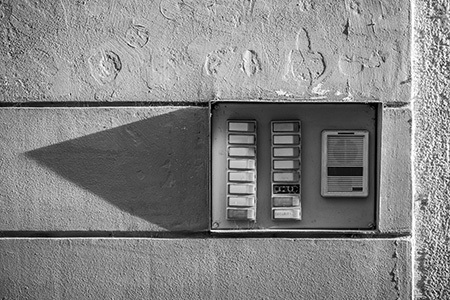
Here’s a summary of the material we’ve covered from above:
- Fixing your doorbell yourself is easy with the right method and tools
- You'll need a screwdriver and multimeter for the job
- Doorbell parts are easy to replace and very affordable
- Follow our procedures for checking the wiring, button, and transformer
- It's safe to work on the doorbell with the power on when diagnosing the problem
- Turn off the power to the unit when replacing any parts, especially the transformer
As always, you want to put your safety first. If you’re at all unsure of what you’re doing, you should consult a professional for help and try to learn along the way.
That’s How to Handle a Doorbell Buzzing
With some experience you can work on your doorbell by yourself, but if you aren’t sure how electricity functions, please consult a professional so your safety is ensured. With doorbell buzzing, you’re likely dealing with a transformer issue and if you’re replacing that, there is risk of electrocution, so please play it safe.



